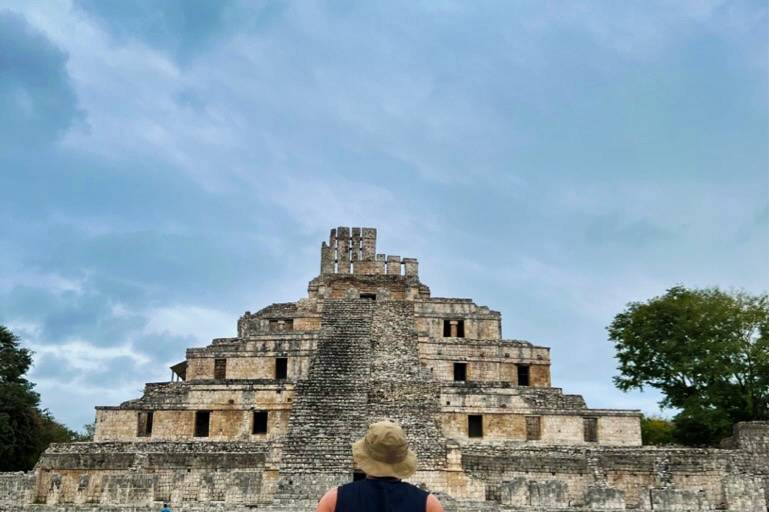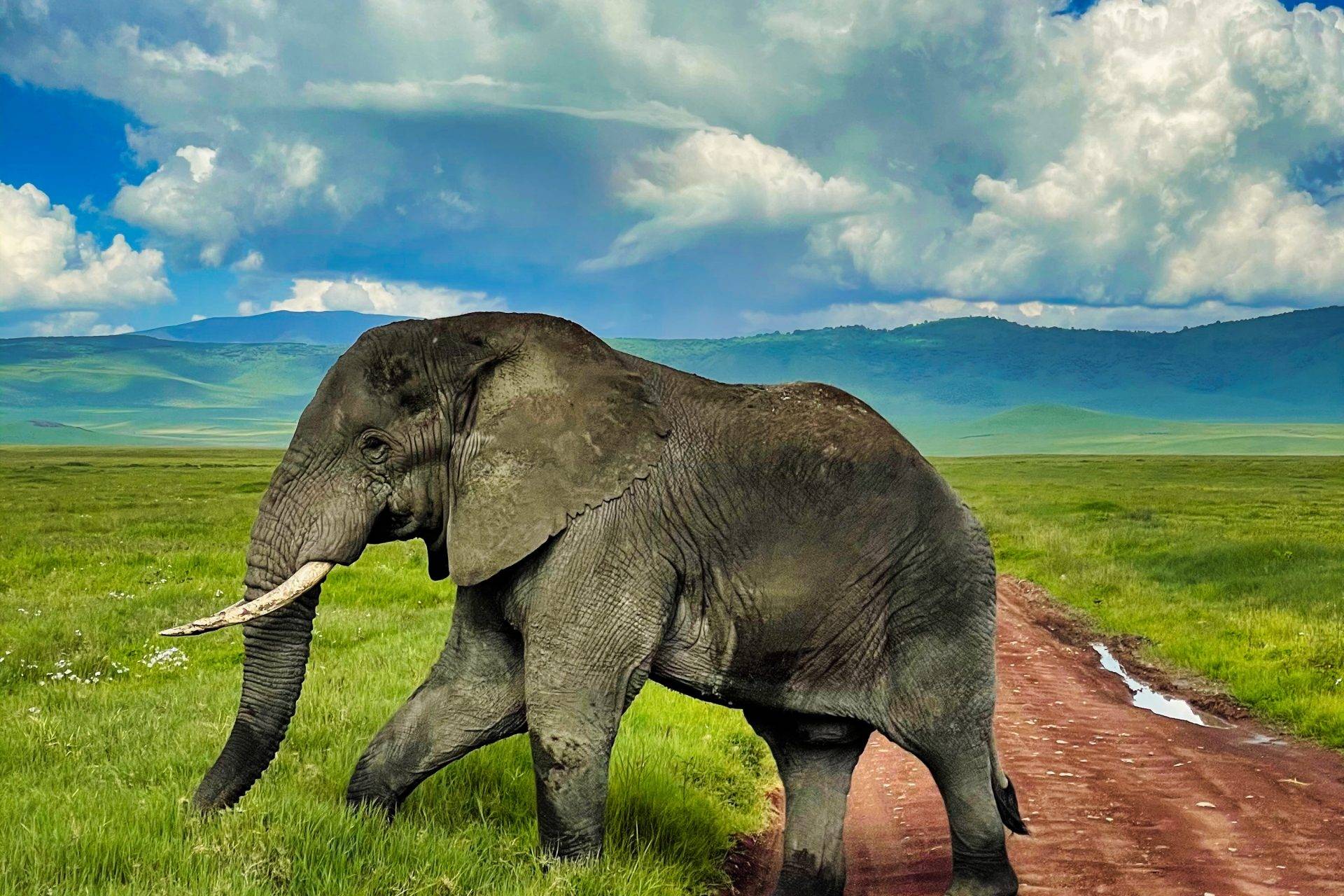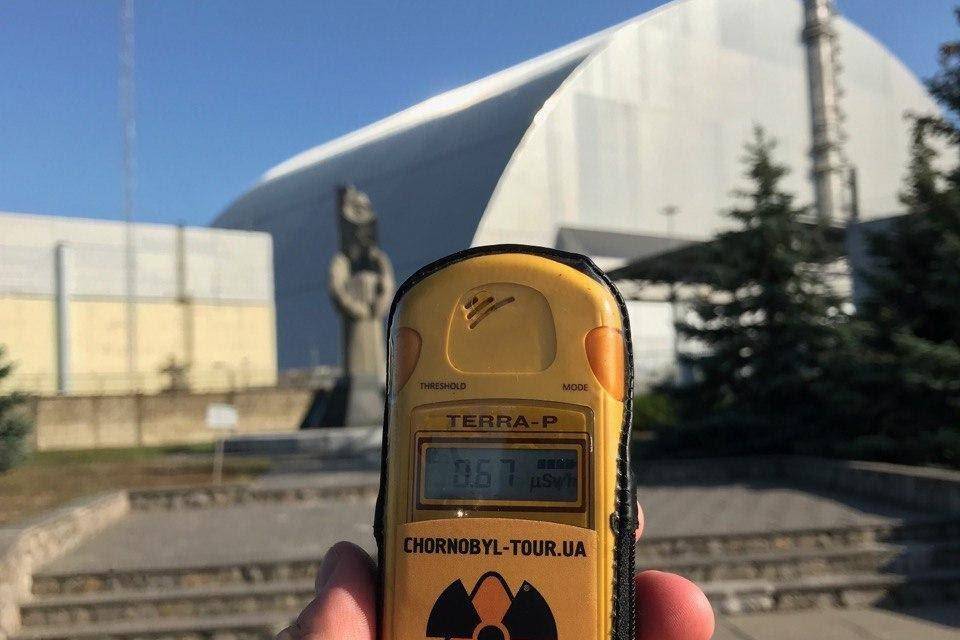At the base of the majestic Matterhorn lies Zermatt, a haven for those with a thirst for adventure and a love for nature’s beauty. As hikers tighten their bootlaces, they’re not just gearing up for a walk—they’re beginning an odyssey, intertwining with the vast expanse of nature. This car-free haven in Switzerland, with its charming cobblestone lanes set against towering mountain ranges, is more than a mere tourist spot—it’s a story waiting to be discovered. Join us as we journey through Zermatt’s scenic trails, where every path has a tale, and every panorama leaves an indelible mark. Enter the ultimate hiking realm. Welcome to Zermatt.
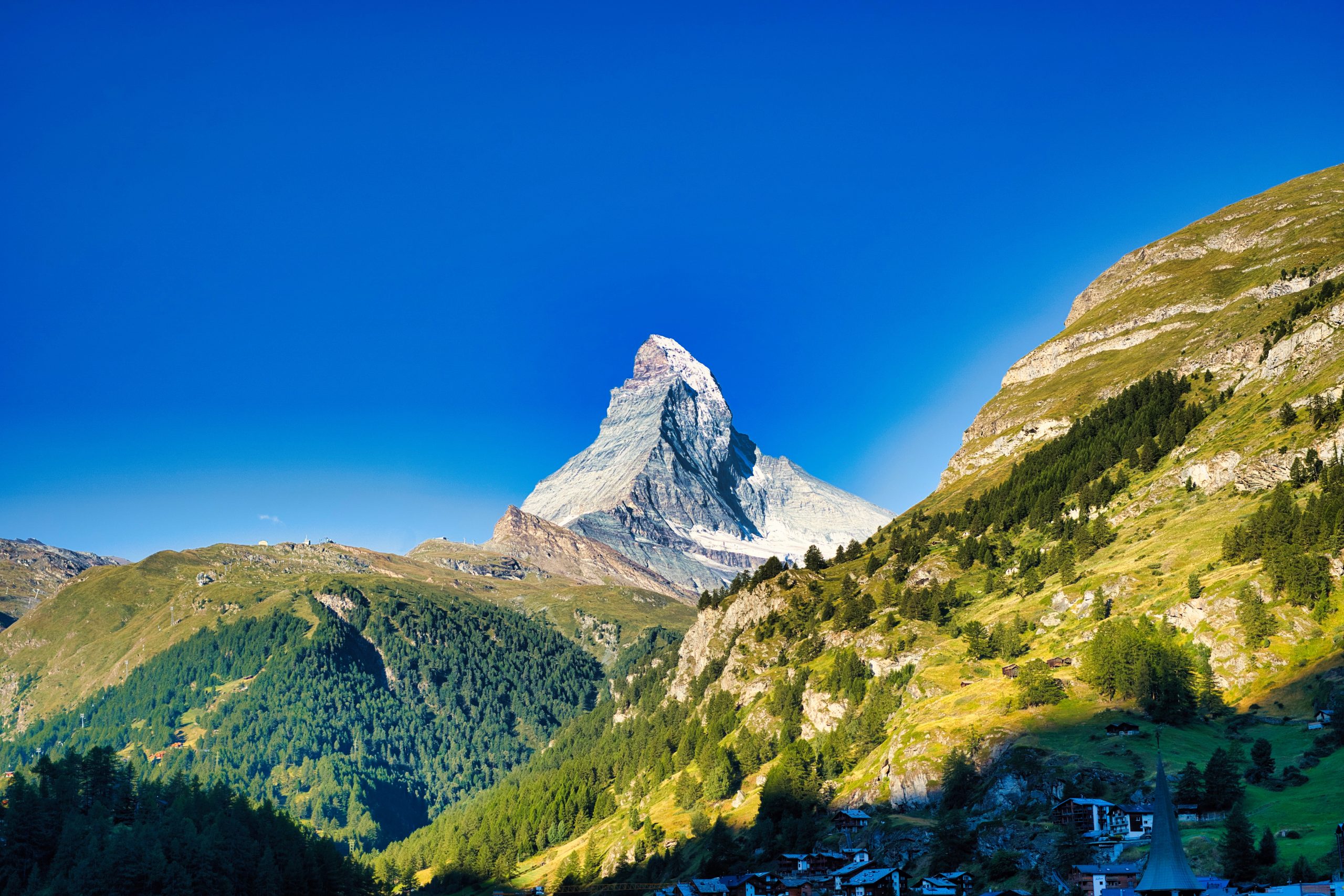 Some info about Zermatt
Some info about Zermatt
We were in Zermatt in August for 1 week and it was a lovely time for walking, the weather was comfortable. Before the main list of the best hiking trails in Zermatt, I have a bit of information.
- Car-Free Village: Zermatt takes pride in its car-free status, preserving its pristine air quality. Visitors should park in Täsch, 5 km away, and take the frequent shuttle trains into Zermatt.
- Budget Mindfully: Zermatt can be costly. Many visitors choose to stay in nearby towns to save money, easily accessing Zermatt by train.
- A Walker’s Haven: Zermatt invites exploration by foot, from village strolls to mountain hikes. Good footwear is essential; the charm of these pathways is captivating.
- Hiking Seasons: While Zermatt is beautiful all year, summer shines for hiking. Verdant trails, blooming flowers, and warm weather offer perfect conditions for witnessing the Matterhorn’s grandeur.
- For Everyone: Zermatt caters to hikers of all levels. With varied trails, from easy walks to challenging climbs, it ensures every visitor experiences its alpine magic.
- Embrace the Local Cuisine: While the town is renowned for its scenic beauty, don’t forget to dive into its culinary delights. Swiss fondue, raclette, and rösti are just a few dishes that warmed my soul after a day of exploring.
- Modern Amenities: Zermatt seamlessly blends nature with modern amenities. The village offers comprehensive infrastructure, from widespread internet connectivity even on mountain trails to numerous elevators and well-maintained paths, ensuring a comfortable and connected experience for all visitors.
Best hikes in Zermatt
Nestled amidst the towering peaks of the Swiss Alps, Zermatt is a haven for hiking enthusiasts. This picturesque town offers an array of hiking trails, ranging from leisurely walks to challenging mountain treks. Each trail promises breathtaking views and an unforgettable adventure.
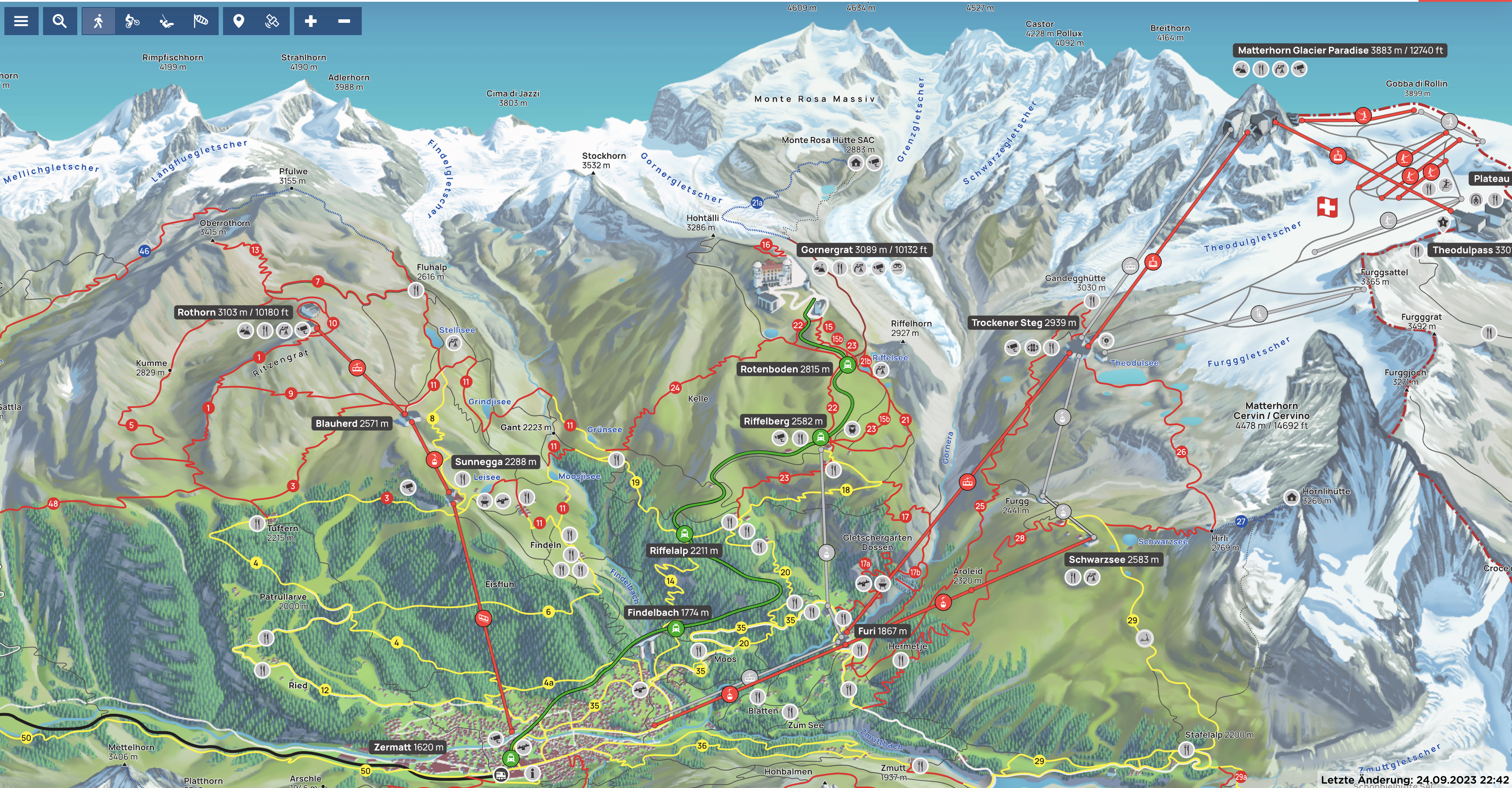
I’ve hiked countless trails around the world, but Zermatt truly stands out. From its iconic views of the Matterhorn to hidden paths, every step here is a memory. Let me guide you through the best hiking trails in Zermatt from my own adventures.
P.S. All photos are my own, please link to my website when using them anywhere. Here — https://tripiko.com/switzerland/ is a link to the full album from the walks.
1. Five Lakes Walk (5-Seenweg)
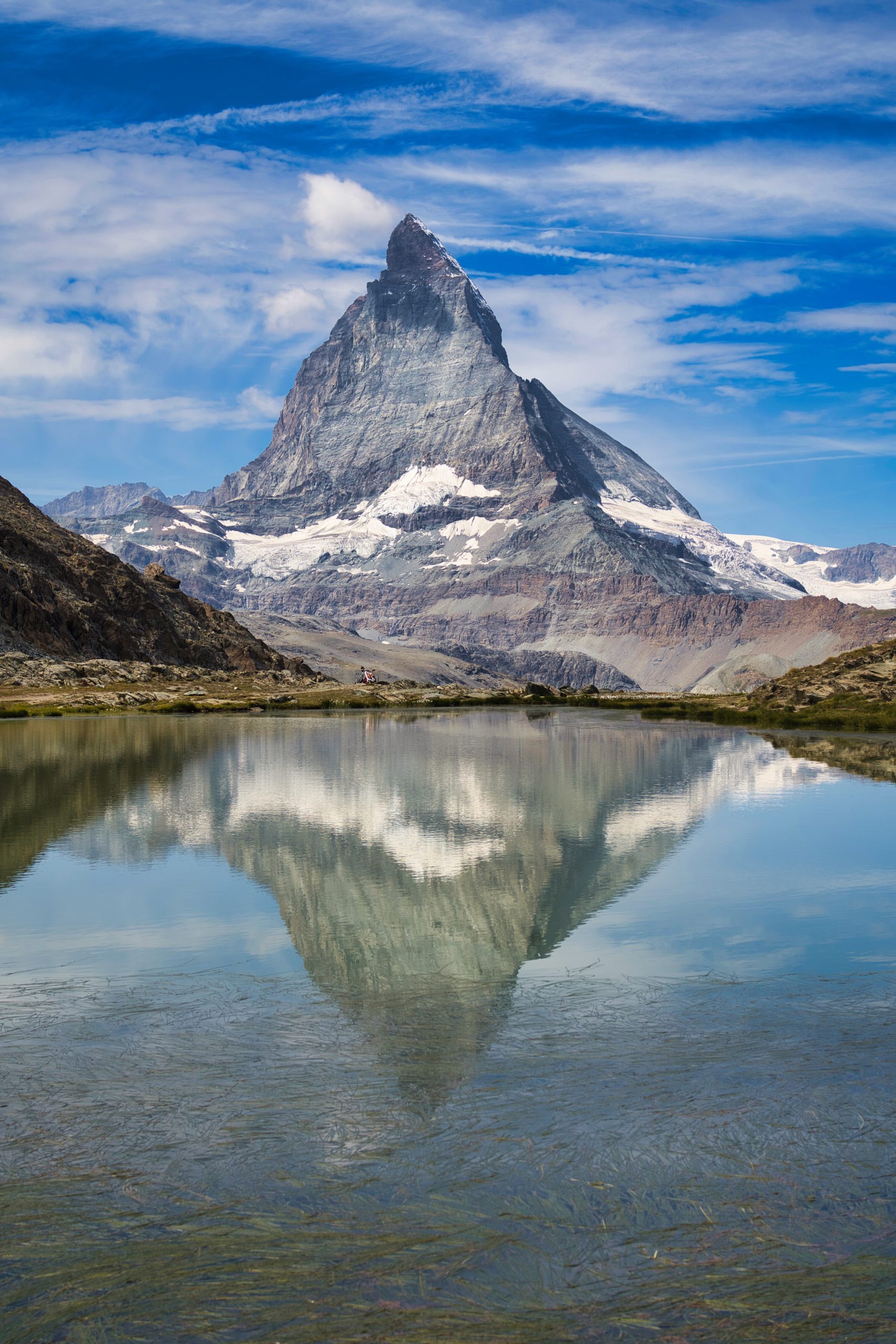
Overview: The Five Lakes Walk, or «5-Seenweg,» is one of Zermatt’s most popular hiking routes, particularly known for its picturesque views of the Matterhorn reflected in the tranquil waters of mountain lakes. The 5-Seenweg is a relatively easy hike that connects five beautiful mountain lakes. As you traverse the trail, the Matterhorn’s reflection can be seen in several of these lakes on a clear day, making for stunning photo opportunities.
The Lakes:
-
- Stellisee: This is perhaps the most famous of the five for its crystal-clear reflection of the Matterhorn. It’s a popular spot at sunrise.
- Grindjisee: Surrounded by wetlands and rich in biodiversity, this lake offers a unique view of the Matterhorn with trees in the foreground.
- Grünsee: This «Green Lake» is set against a backdrop of meadows, larch trees, and the rugged peaks of the Alps.
- Moosjisee: As the name suggests (Moos translates to moss), this lake is green due to the algae in its water. It’s especially beautiful in the fall.
- Leisee: Popular for families, this lake offers a playground and barbecue spots. It’s also great for a refreshing swim, and you can enjoy a view of the village from here.
Difficulty: Easy to moderate
Start/End: Blauherd to Sunnegga (You can also reverse the route.)
With Kids: Yes, it’s quite popular with families.
Best Time to Visit: June to September
2. Matterhorn Glacier Trail
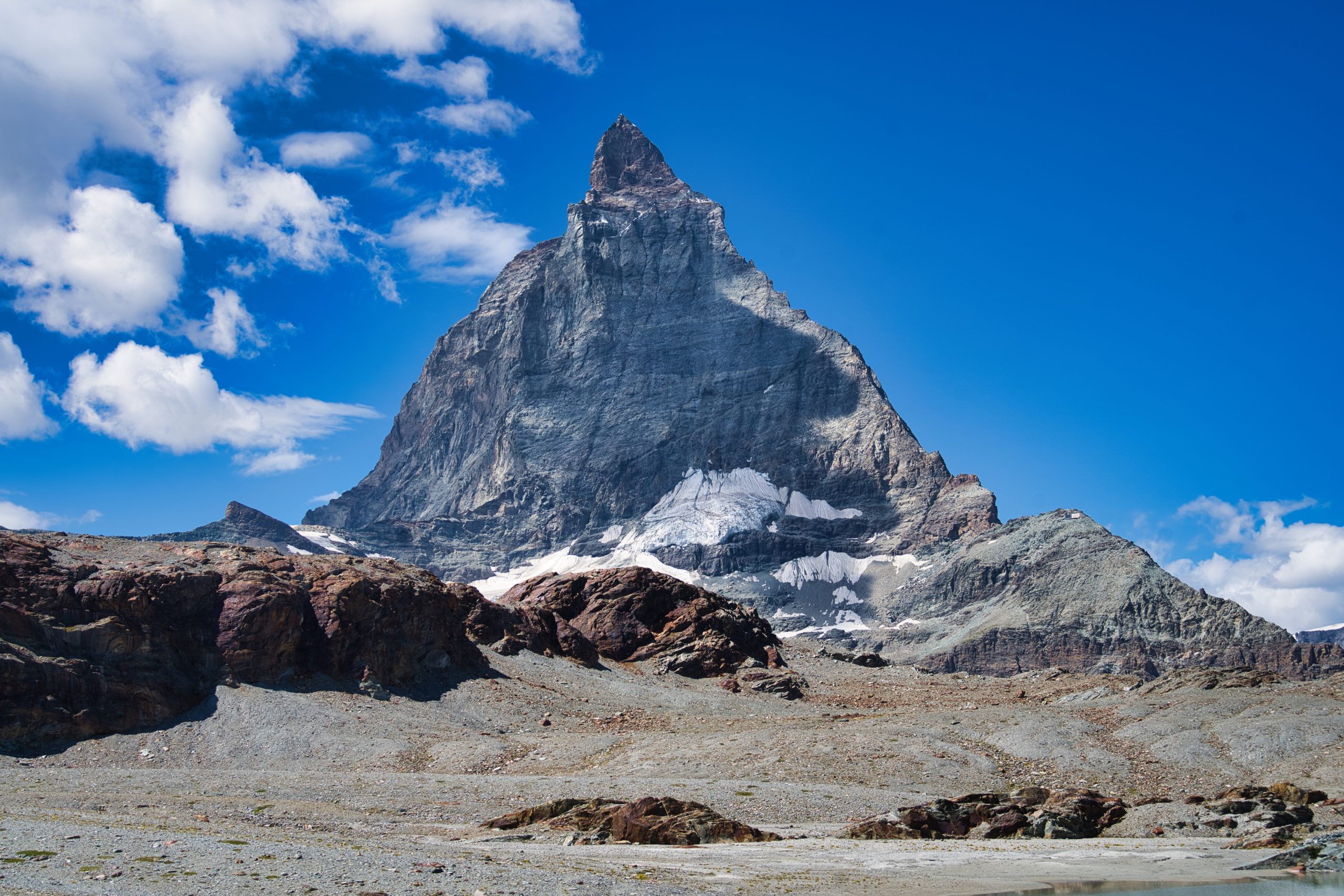
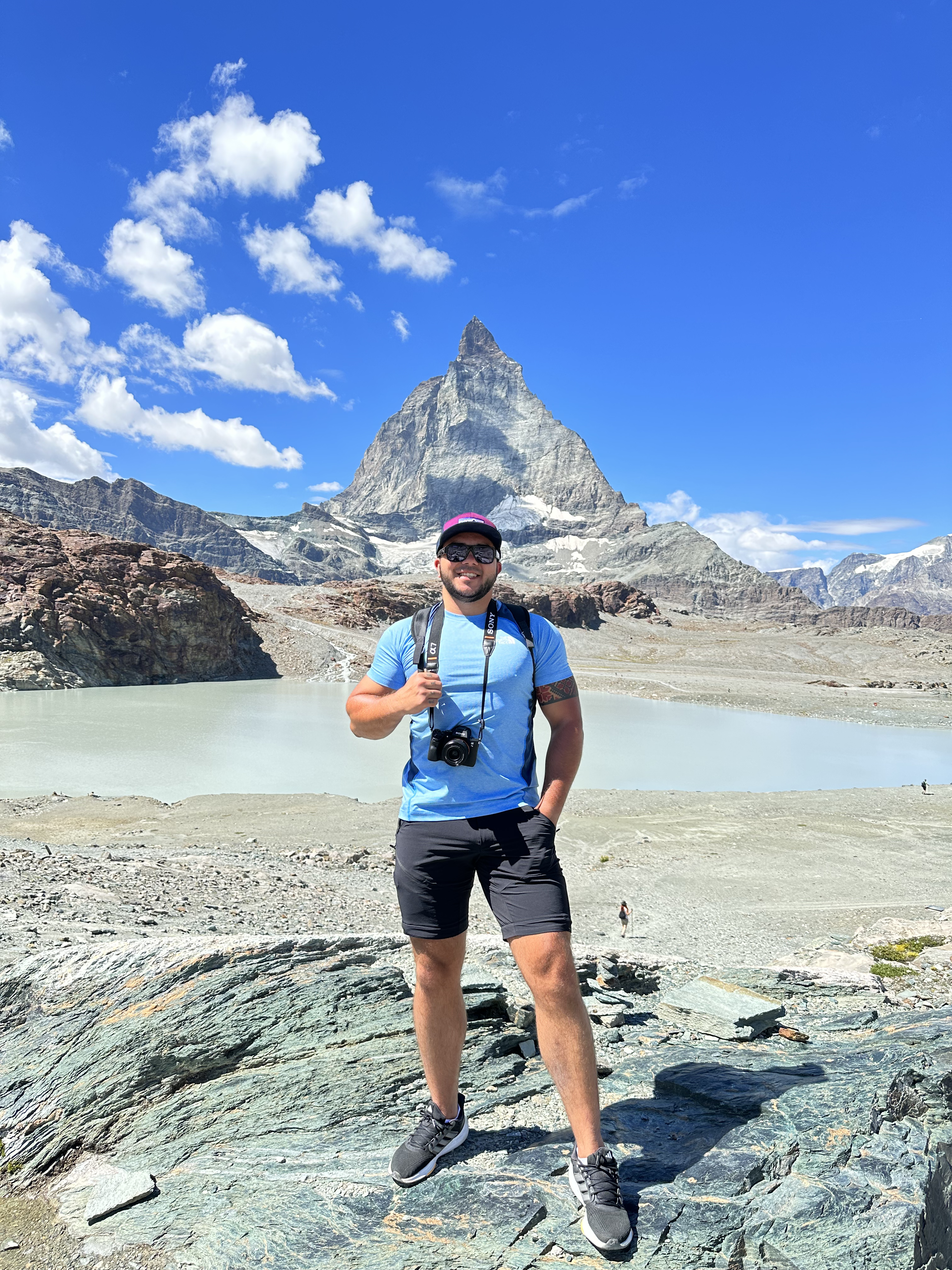 The Matterhorn Glacier Trail offers a unique perspective of the high-alpine environment and the breathtaking landscapes of the Zermatt region. It’s a reminder of nature’s raw power and beauty, as well as the transient nature of glaciers in our warming world. If you’re in Zermatt and are prepared for a moderately challenging hike, this trail is highly recommended.
The Matterhorn Glacier Trail offers a unique perspective of the high-alpine environment and the breathtaking landscapes of the Zermatt region. It’s a reminder of nature’s raw power and beauty, as well as the transient nature of glaciers in our warming world. If you’re in Zermatt and are prepared for a moderately challenging hike, this trail is highly recommended.
Difficulty: Moderate
Start/End: Trockener Steg to Schwarzsee
With Kids: Suitable for older kids accustomed to hiking; the trail can be rocky in parts.
Best Time to Visit: July to September
3. Gornergrat to Riffelberg
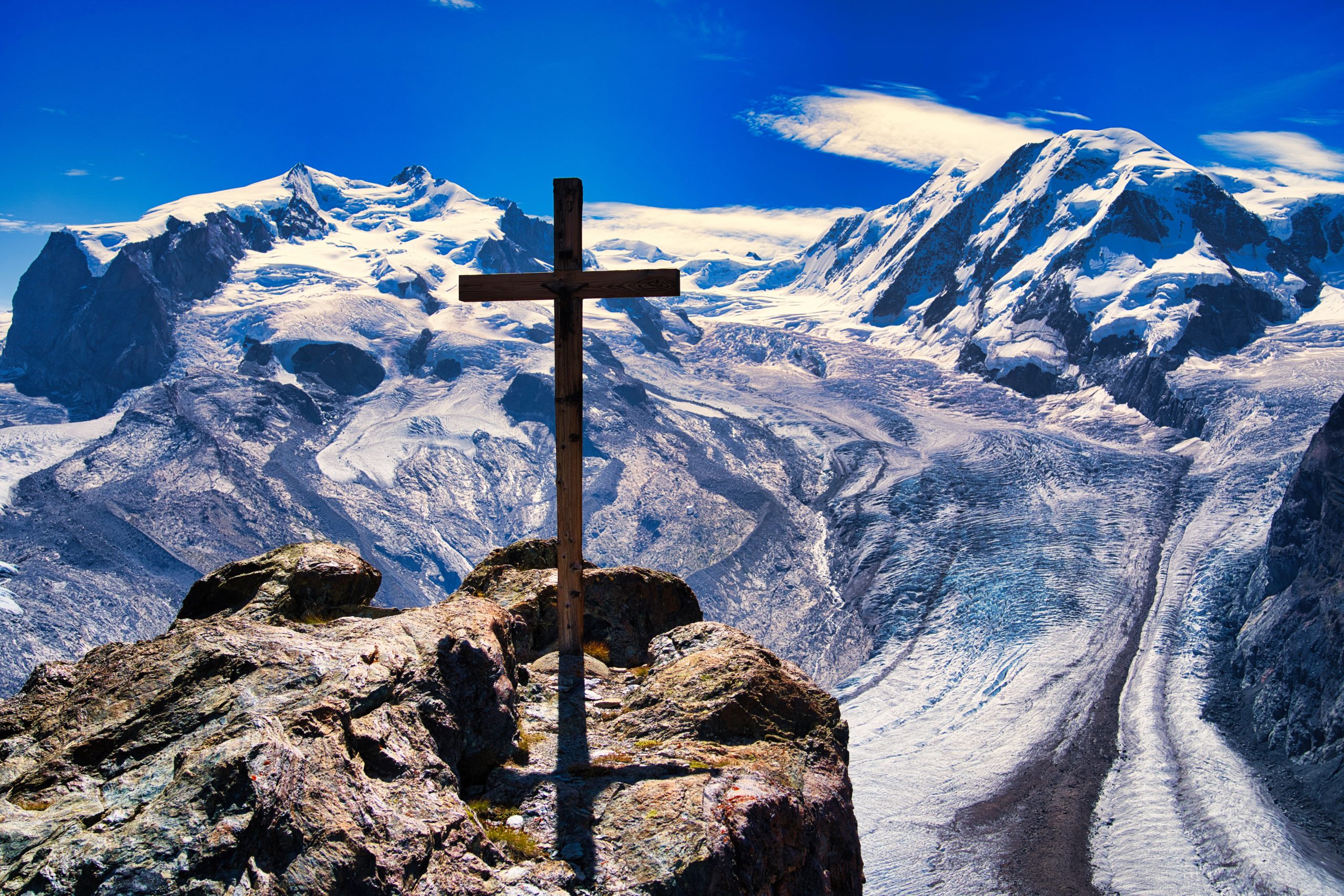
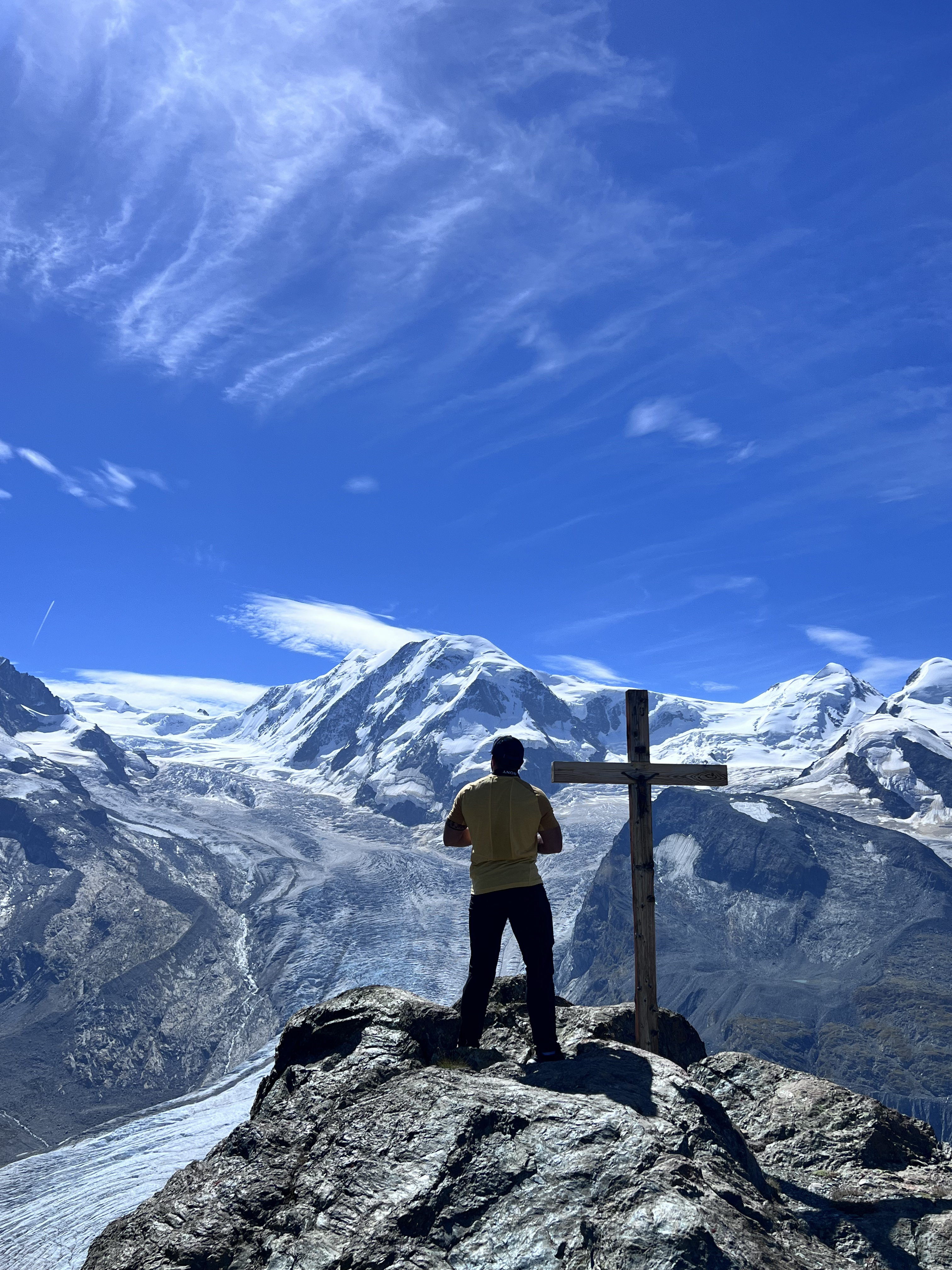
The Gornergrat to Riffelberg route is a captivating alpine hike situated in the Zermatt region of the Swiss Alps. A descent from the lofty heights of the Gornergrat down to Riffelberg, this trail boasts an array of natural spectacles and panoramic vistas.
The dominant presence of the Matterhorn, one of the world’s most iconic mountains, accompanies hikers throughout the trail. The route also offers expansive views of the Gorner Glacier, the second-largest glacier system in the Alps. This juxtaposition of sharp mountain peaks and flowing glacial expanses is a visual treat.
Difficulty: Moderate (due to the altitude)
Start/End: Gornergrat summit to Riffelberg
With Kids: Yes, especially since it’s mostly downhill.
Best Time to Visit: June to September
4. Höhenweg (High-altitude Trail)
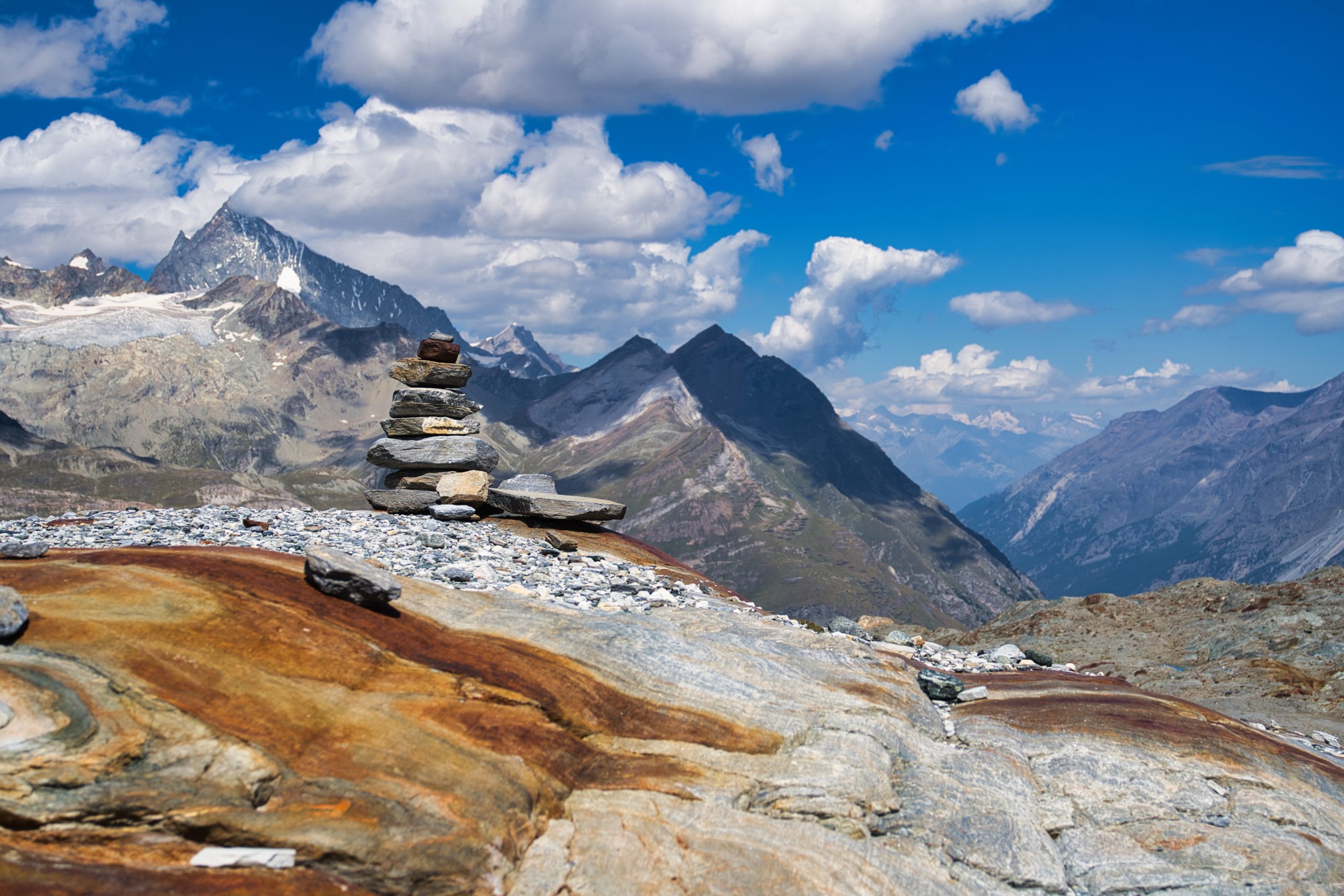 Difficulty: Moderate
Difficulty: Moderate
Start/End: Blauherd to Gornergrat
With Kids: Suitable for older kids.
Best Time to Visit: July to September
5. Matterhorn Glacier Paradise to Trockener Steg
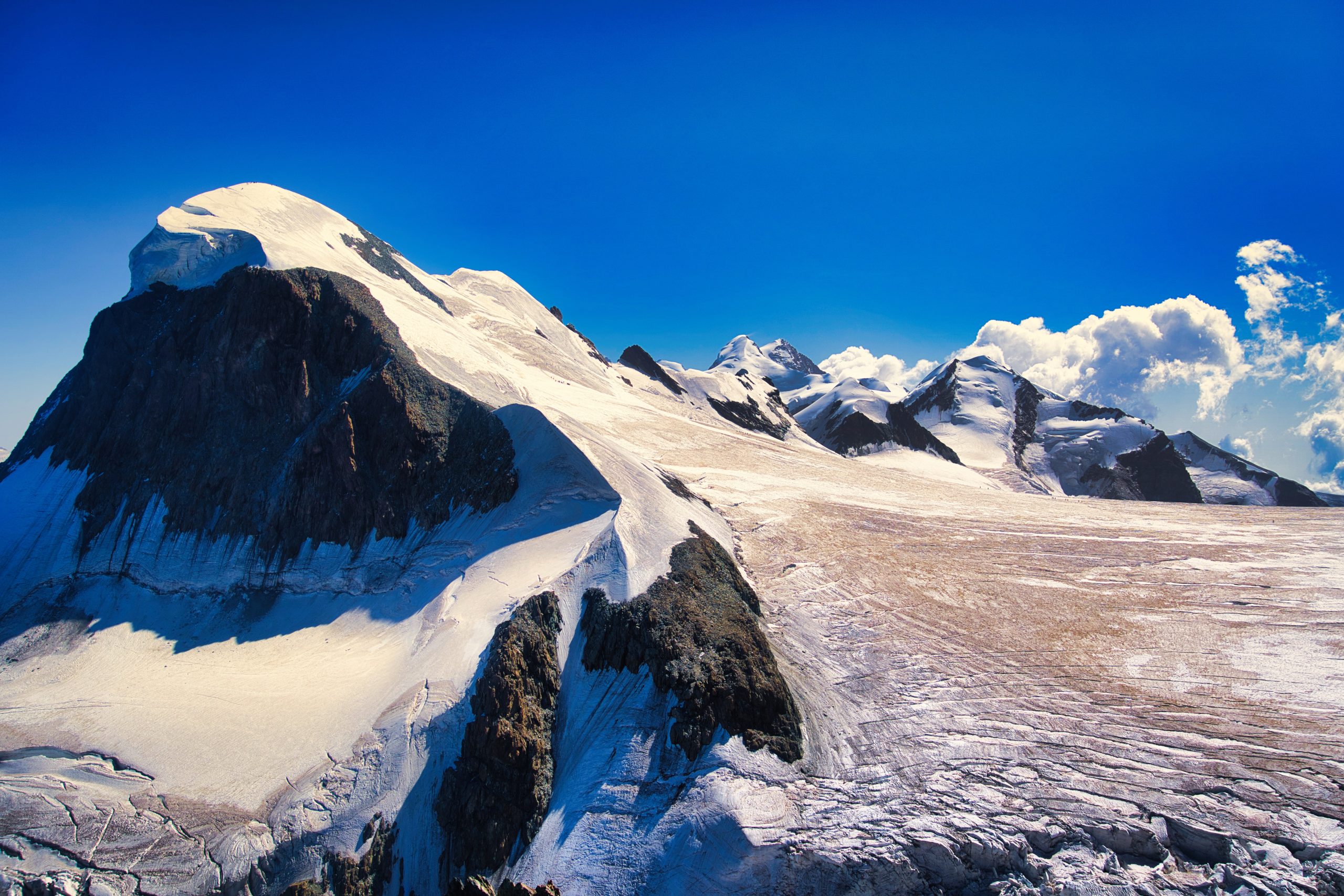
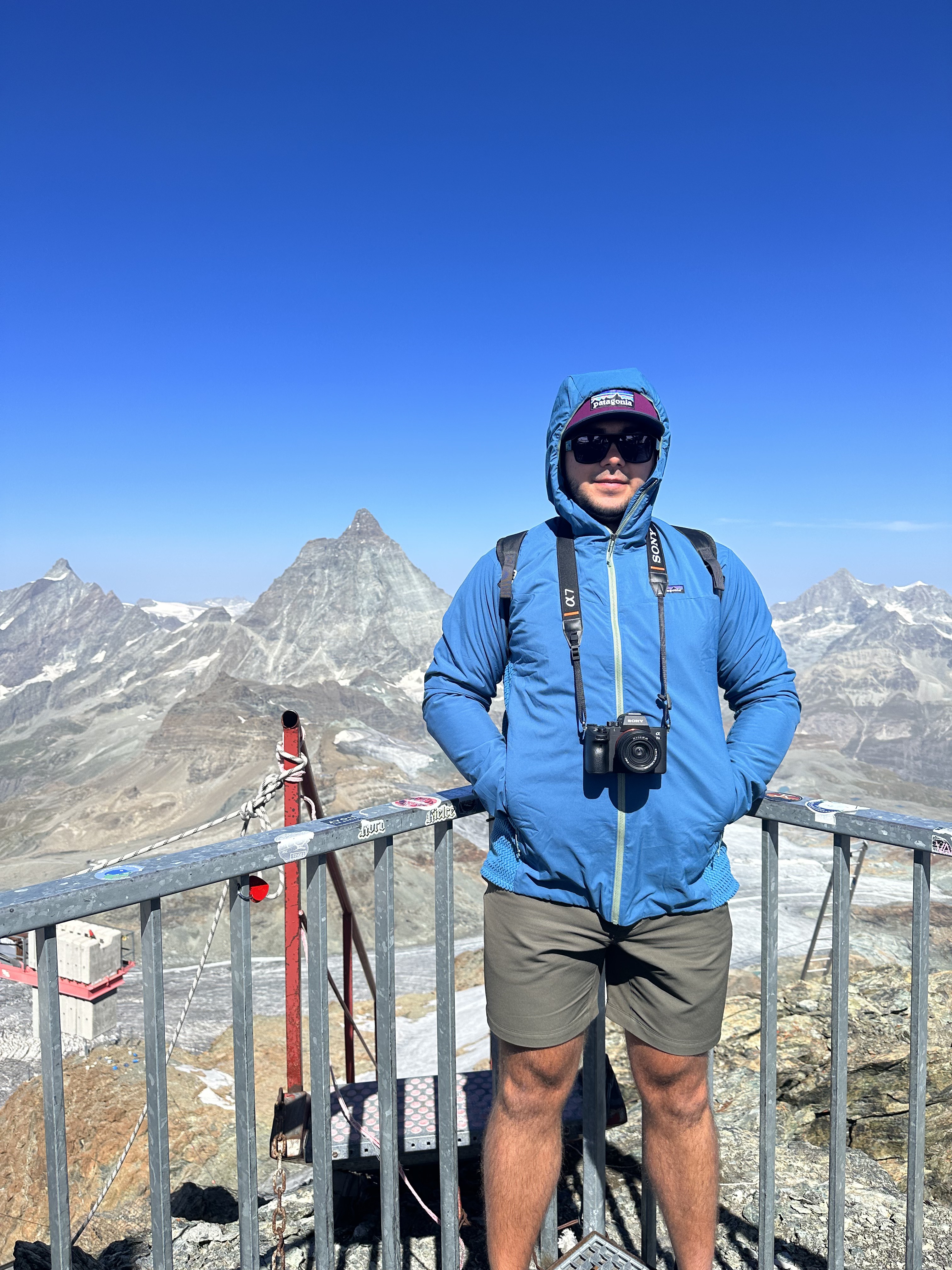 The hike from Matterhorn Glacier Paradise to Trockener Steg offers an immersive experience into the high-altitude glacial environment of the Zermatt region. The path from Matterhorn Glacier Paradise descends towards Trockener Steg, offering a unique high-mountain environment. The terrain is rocky and moon-like, shaped by the glaciers and stark in its beauty. Along the route, there are views of the surrounding peaks and deep glacial crevasses.
The hike from Matterhorn Glacier Paradise to Trockener Steg offers an immersive experience into the high-altitude glacial environment of the Zermatt region. The path from Matterhorn Glacier Paradise descends towards Trockener Steg, offering a unique high-mountain environment. The terrain is rocky and moon-like, shaped by the glaciers and stark in its beauty. Along the route, there are views of the surrounding peaks and deep glacial crevasses.
Difficulty: Easy (but at a high altitude)
Start/End: Matterhorn Glacier Paradise to Trockener Steg
With Kids: Yes, it’s a relatively easy trail but do consider the altitude.
Best Time to Visit: June to September
6. Edelweissweg
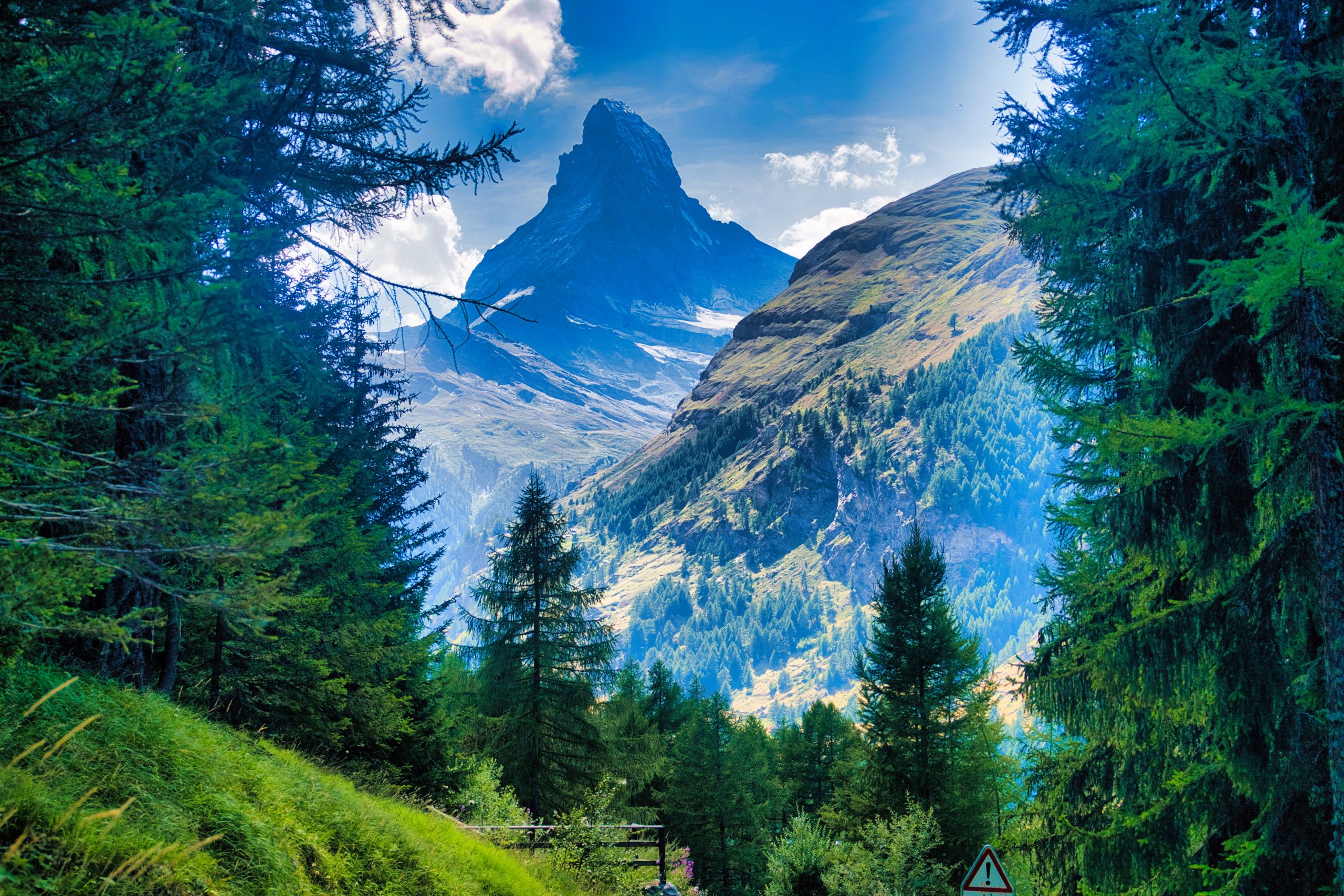
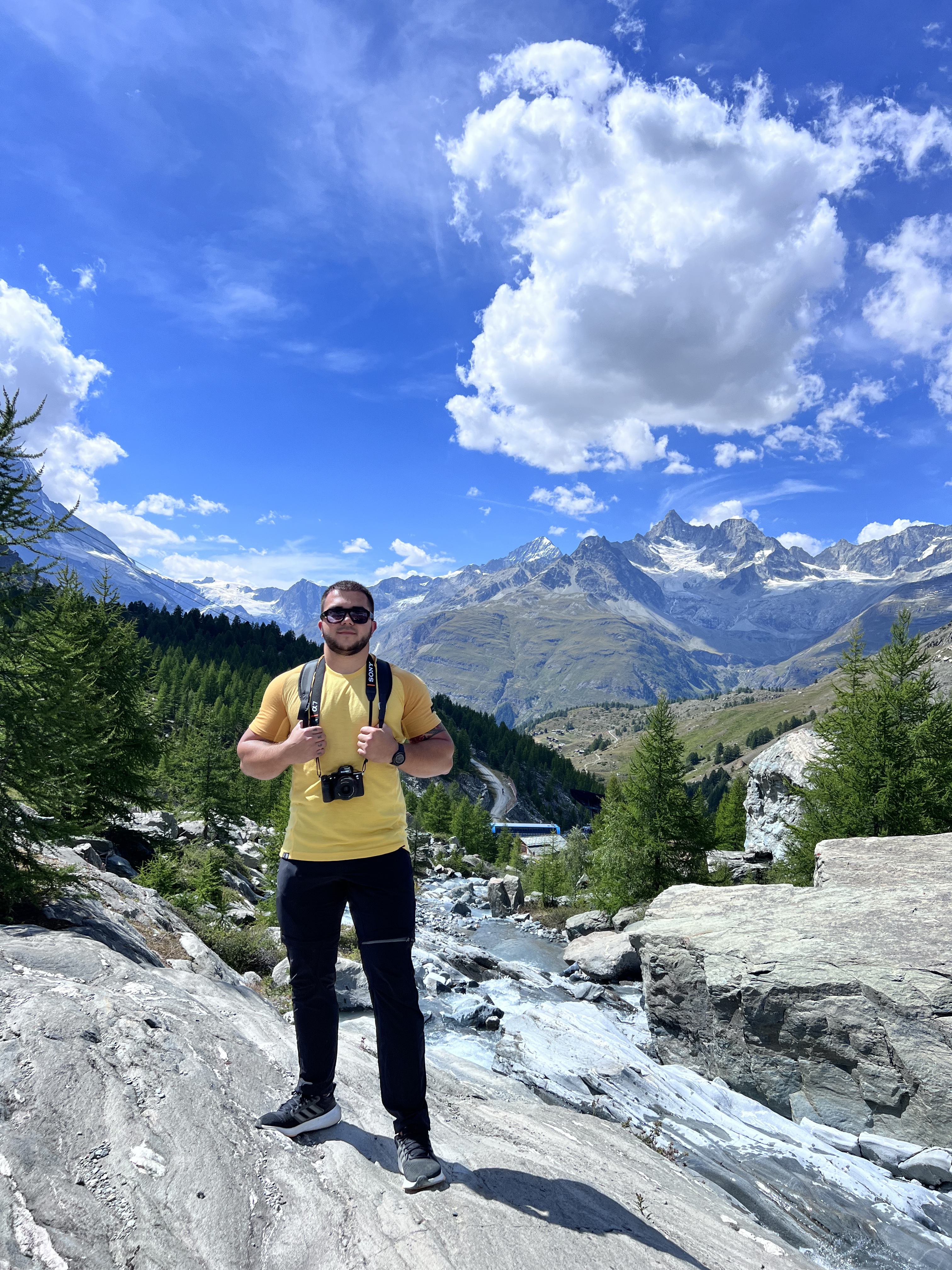 Difficulty: Easy
Difficulty: Easy
Start/End: This is a loop starting and ending at Furi.
With Kids: Yes, it’s a shorter hike with less challenging terrain.
Best Time to Visit: June to August
7. Hohbalmen
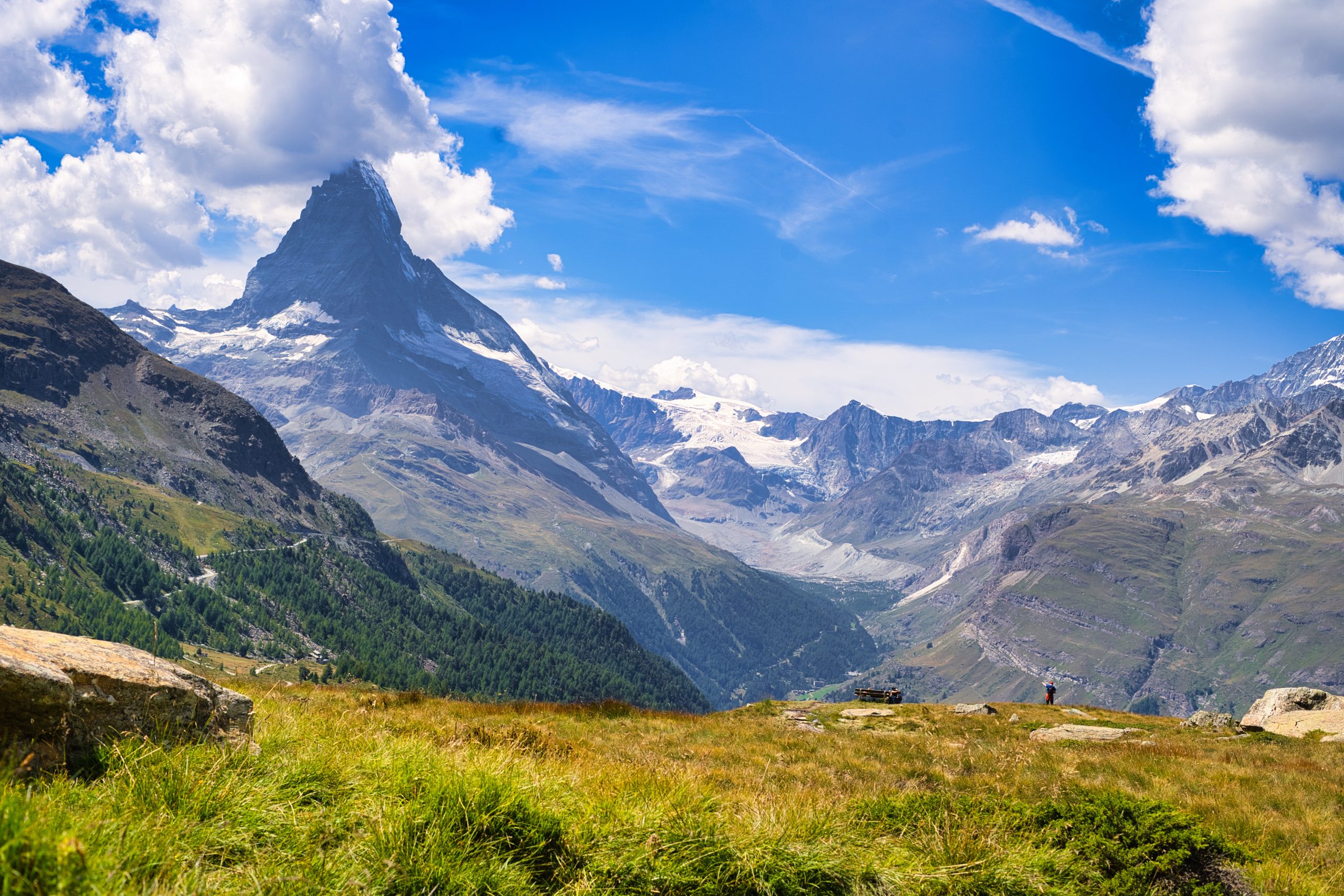 Difficulty: Challenging
Difficulty: Challenging
Start/End: Zermatt to Hohbalmen and back (or you can continue to other trails from Hohbalmen)
With Kids: Suitable for older kids with hiking experience; the trail is long and can be strenuous.
Best Time to Visit: June to September
8. Europaweg
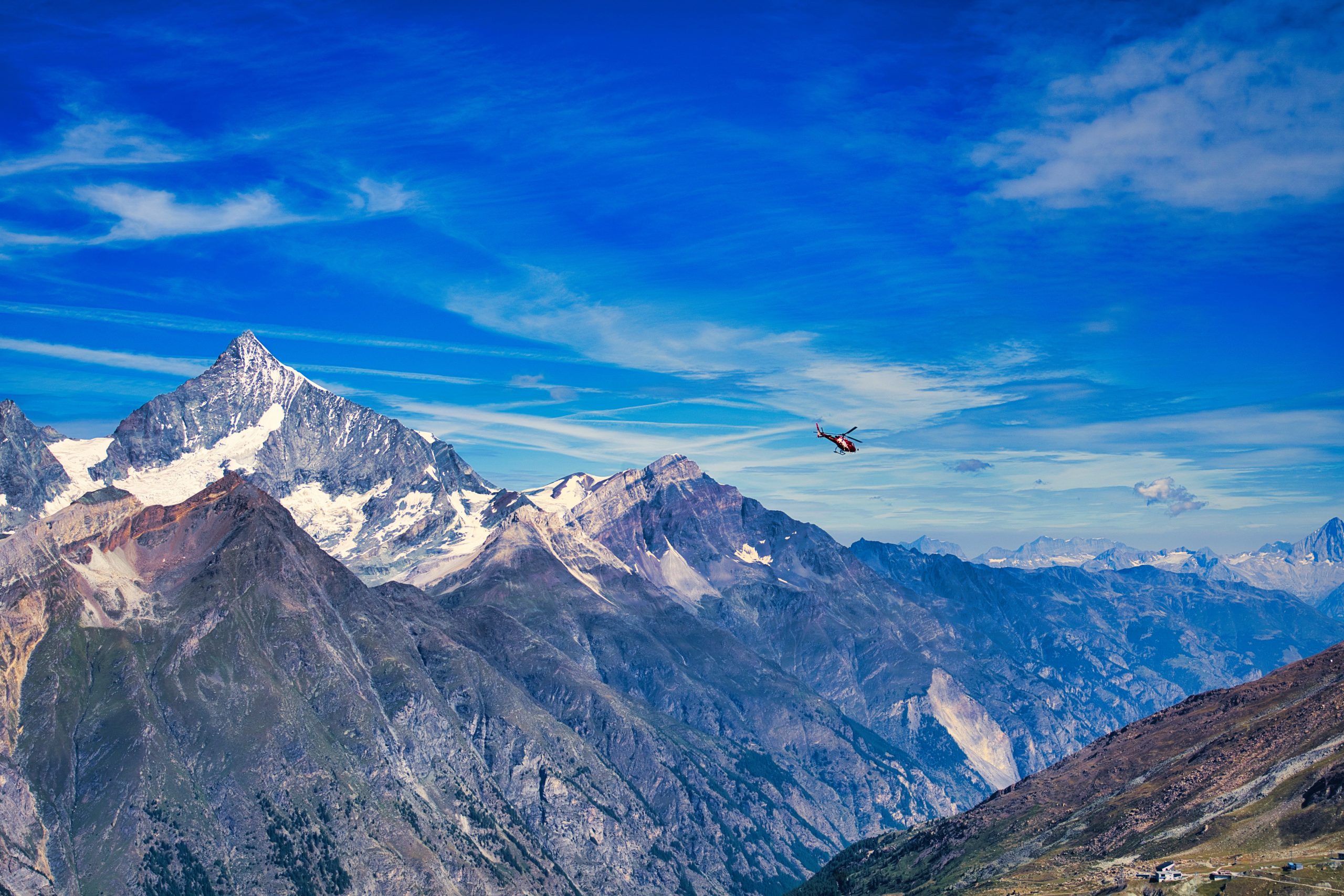 Difficulty: Challenging
Difficulty: Challenging
Start/End: Grächen to Zermatt
With Kids: Not recommended for young kids; suitable for teens with good hiking stamina.
Best Time to Visit: July to early September
9. Rothorn to Findeln
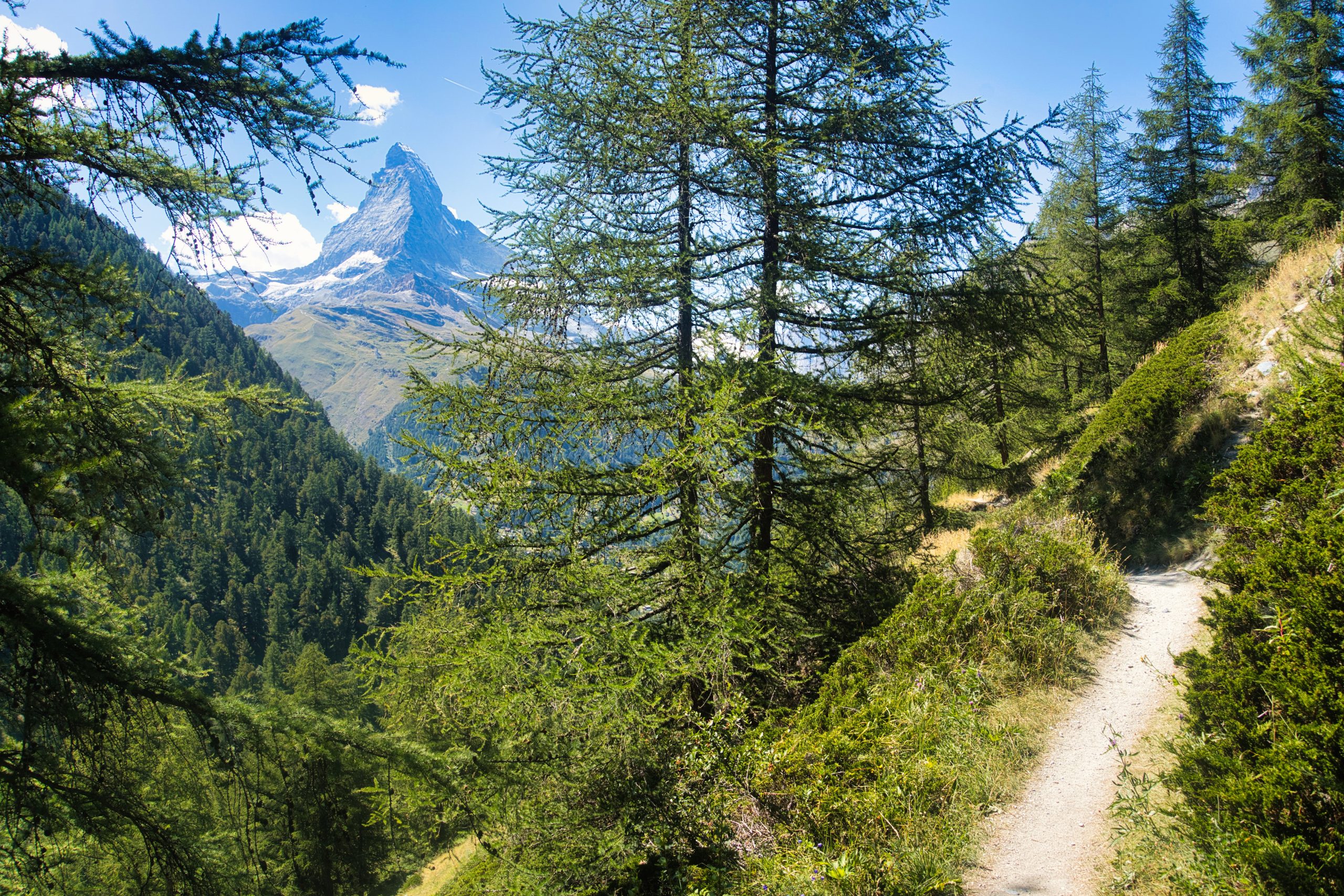 Difficulty: Moderate
Difficulty: Moderate
Start/End: Rothorn to Findeln, with a descent into the beautiful Findeln Valley.
With Kids: Suitable for older children with some hiking experience.
Best Time to Visit: June to September
10. Schwarzsee to Zermatt
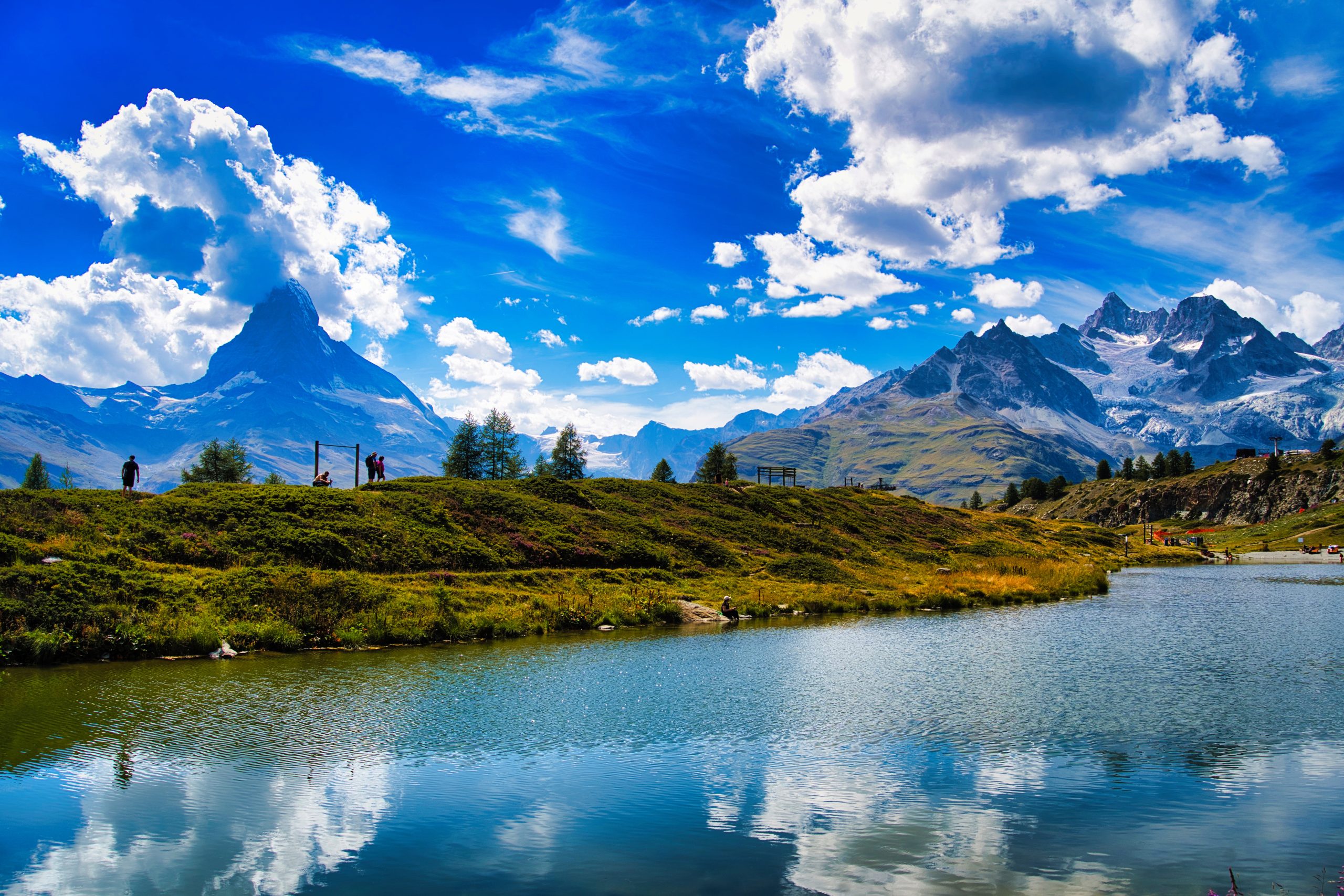 Difficulty: Easy to moderate
Difficulty: Easy to moderate
Start/End: Schwarzsee to Zermatt, following a meandering path with views of the Matterhorn.
With Kids: Yes, it’s quite accessible for children.
Best Time to Visit: May to October
Tips for a successful hiking trip
Hiking in Zermatt is a combination of breathtaking views and invigorating mountain air, making it a must for any outdoor enthusiast. But before you dive into the world of hiking in Zermatt, it’s important to familiarize yourself with some key tips and guidelines to ensure you have an enjoyable and safe trip. Check out our tips to make the most of your alpine adventure.
- Prioritize Safety: Always inform someone of your hiking route and expected return time. Stick to marked trails and heed warning signs.
- Weather Watch: Mountain weather can be unpredictable. Check forecasts ahead of your hike and be prepared for sudden changes, especially at higher altitudes.
- Stay Nourished: In Zermatt, many stations offer eateries or snack bars. However, it’s still wise to pack some energy-boosting snacks and plenty of water.
- Sun Protection: The sun can be intense in the mountains, reflecting off snow or water surfaces. Wear sunglasses, a wide-brimmed hat, and apply broad-spectrum sunscreen every 2-3 hours.
- Choose the Right Footwear: Invest in quality hiking boots that offer good ankle support and grip. Break them in before your hike to avoid blisters.
- Layer Up: Dress in layers. Conditions might vary during your hike, and having the option to add or remove layers helps in staying comfortable.
- Hydrate: The exertion and altitude can lead to faster dehydration. Carry a reusable water bottle and refill at stations when possible.
- Mind the Altitude: Zermatt’s high-altitude areas might pose challenges for some. Listen to your body, and if you experience dizziness or shortness of breath, consider descending.
- Respect Nature: Stay on designated paths to preserve the ecosystem. Carry a trash bag and ensure you leave no waste behind.
- Personal Care: Along with sun cream, consider carrying a basic first aid kit, lip balm, and insect repellent for unforeseen situations.
As for food and water, don’t worry, almost every station has a restaurant, but check on google maps to see if it’s open. We had lunch there and really enjoyed the local cuisine.
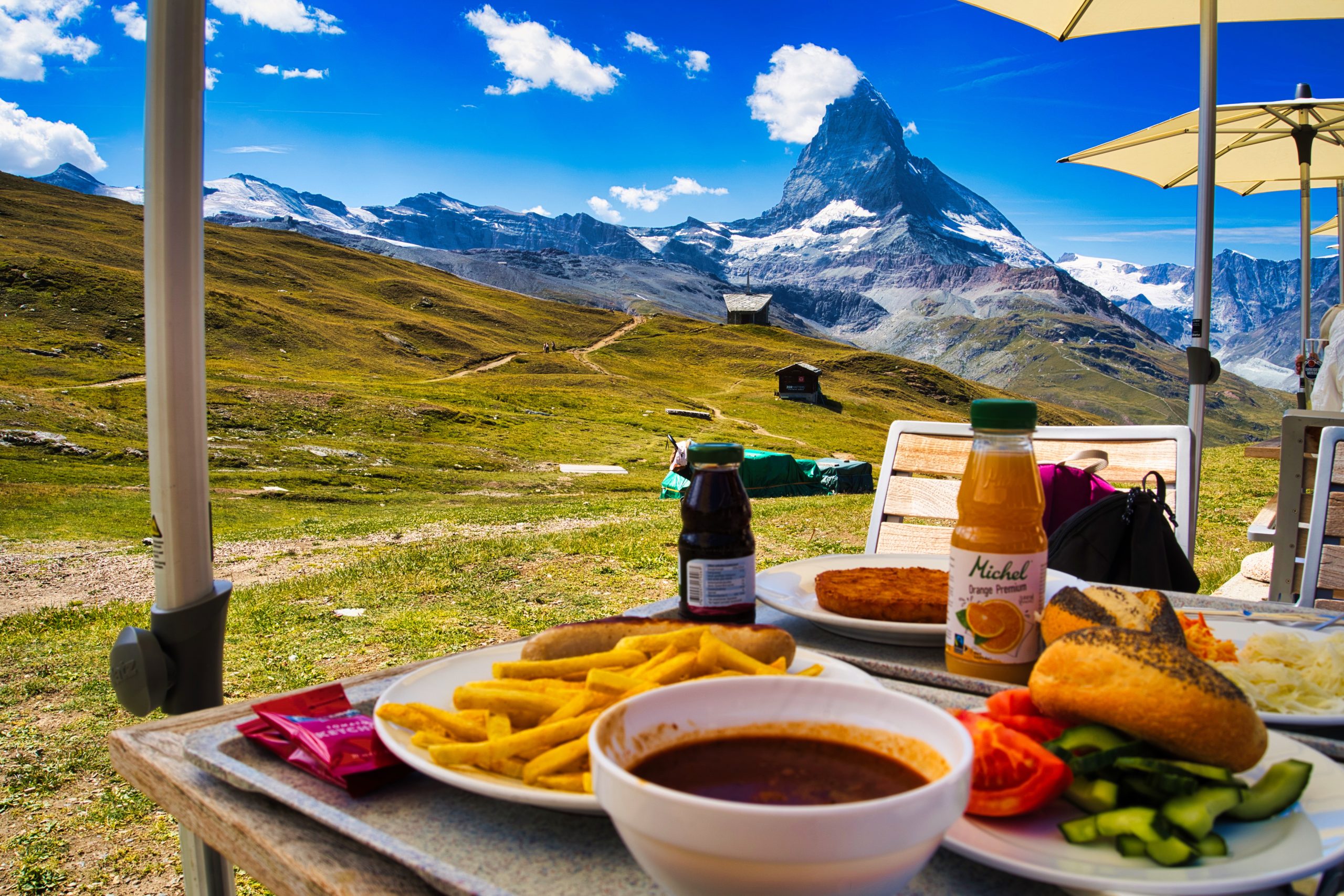
NomadicGeorge
I'm a 26-year-old digital marketer with a passion for exploring the globe. Having journeyed through 20 countries, my love for sports, history, adventure, and hiking has only grown. Traveling isn't just a hobby for me; it's a way of life. Join me as I share my experiences from around the world.
